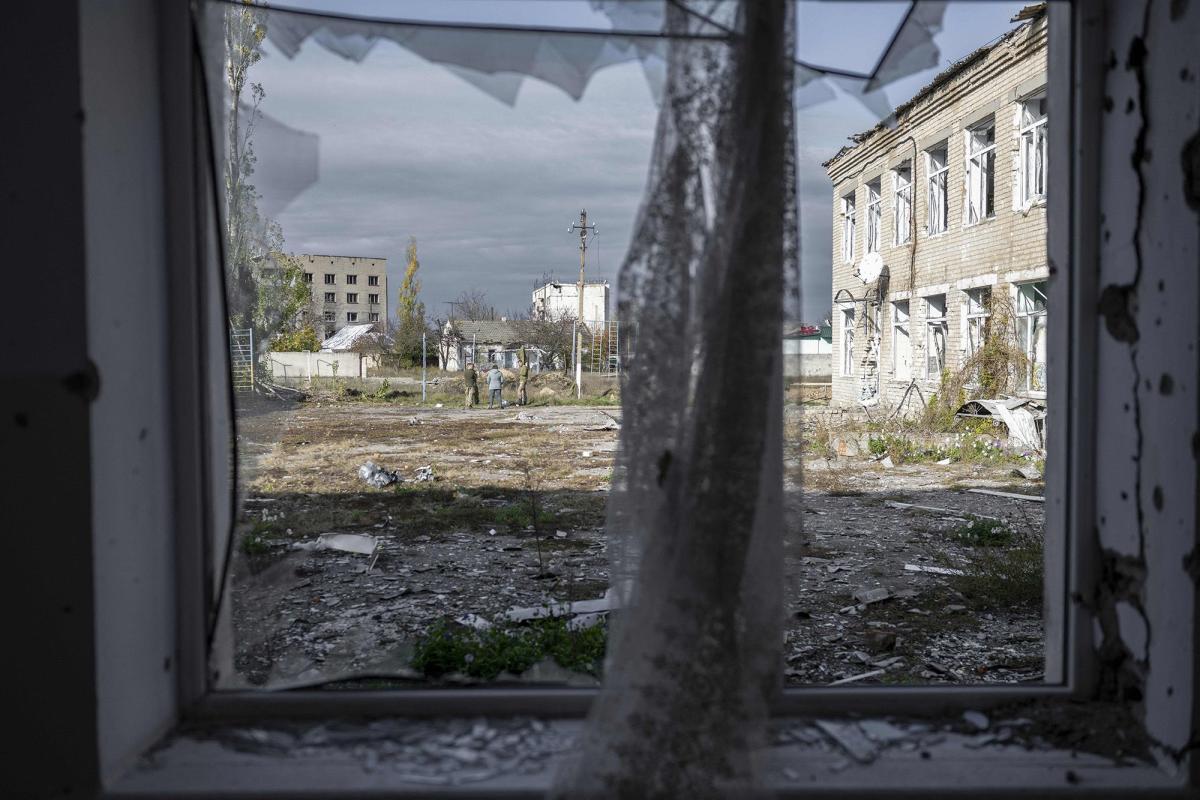
(Bloomberg) — Russia ordered its troops to leave Ukraine’s city of Kherson, the first major regional center seized in its invasion, in a highly symbolic setback for President Vladimir Putin.
Most Read from Bloomberg
With Kyiv’s forces pressing their counteroffensive in the region bordering occupied Crimea, Russian Defense Minister Sergei Shoigu in a televised briefing Wednesday ordered the troops to withdraw from the western bank of the Dnipro River and move to the other shore.
“I understand that this is a very difficult decision,” Sergei Surovikin, the general in charge of Russian forces, told Shoigu in proposing the move. “At the same time, we will save the lives of our servicemen and, in general, the combat capability of the group of troops, which is futile to keep on the right bank in a limited area.”
Putin, who has taken a personal role in most major elements of the campaign, wasn’t shown in the televised meeting.
The retreat marks another major defeat for the Kremlin after Ukraine retook large areas of territory around Kharkiv in the east over the summer. Kherson was the first regional capital to fall in Russia’s Feb. 24 invasion and was among the territories the Kremlin claimed to annex in illegal referendums held in September. Putin said at the time the areas would be Russian forever.
Putin’s Elite Tremble as Hardliners Call for ‘Stalinist’ Steps
“The Russian army isn’t leaving Kherson, it was driven out of Kherson by Ukraine’s Defense Forces,” Oleksiy Arestovych, adviser to the office of the Ukrainian president, wrote in Twitter after the announcement.
Ukrainian forces methodically cut the supply lines to Russia’s garrison in the southern city, tightening the noose with steady advances on the ground. In the last few weeks, Russian occupation officials began evacuating civilians and moved their administration to the eastern bank of the Dnipro River, further from the front line.
President Joe Biden told a news conference in Washington that the US “knew for some time” that Russia was preparing to pull troops from Kherson and called it “evidence of the fact that they have some real problems, the Russian military.” He said it was interesting that Russia had waited until after the US election to decide to announce a withdrawal.
“It will lead to time for everyone to recalibrate their positions over the winter period, and that remains to be seen whether or not — there’ll be a judgment made as to whether or not — Ukraine is prepared to compromise with Russia,” Biden said.
Russia also began pulling troops back, apparently hoping to avoid the chaotic retreats seen in earlier routs, when Moscow’s forces left large amounts of equipment and munitions behind.
“Russian forces were unable to hold the line and now they have to pull back to a defensive position for the winter,” said Pavel Zolotarev, a retired Russian general who’s now an analyst at the Institute for US and Canadian Studies in Moscow. Russia needs time to train the troops called up in the mobilization announced in September, he said.
Ukraine Counteroffensive
Before Wednesday’s announcement, Ukrainian officials had warned that any pullback might be a ruse to draw their troops into a trap. But western intelligence had said the Russian preparations for retreat appeared genuine as their military position worsened.
“We have seen the announcement but we’ll of course wait and see what actually happens on the ground,” Jens Stoltenberg, secretary general of the North Atlantic Treaty Organization, said during a visit to London. “It is encouraging to see how the brave Ukrainian forces are able to liberate more Ukrainian territory.”
Yaroslav Yanushevych, the Ukrainian governor of the region, called for caution. “One shouldn’t fall into euphoria ahead of time, whatever the Russians are saying, trust only the official sources,” he wrote on Telegram.
That sentiment was also echoed by Mykhaylo Podolyak, an advisor to the nation’s president, who said on Twitter that there were “no signs that Russia is leaving Kherson without a fight.”
Kyiv started a massive counteroffensive in the summer, retaking almost all of the Kharkiv region and some locations in Luhansk to the east.
Why Russia’s Nuclear Threats Are Difficult to Dismiss: QuickTake
Putin responded by escalating his now 9-month offensive, mobilizing at least 300,000 reservists, annexing four regions and unleashing a barrage of attacks on civilian targets. Starting Oct. 10, Russia has aimed hundreds of missiles and drones at critical power infrastructure across Ukraine, damaging about 40% of the country’s energy facilities, President Volodymyr Zelenskiy said.
Ukraine, meanwhile, is seeking to recover all its lands occupied by Russia, including Crimea and part of the eastern Donbas that Moscow has held since 2014 as well as territory that was taken since Feb. 24.
The capture of the city of Kherson does not yet take Ukraine into a position where it can mount a full-scale assault to reclaim Crimea, due to fortified Russian defensive lines, according to a western official.
–With assistance from Natalia Drozdiak.
(Updates with President Joe Biden’s remarks in 8th paragraph.)
Most Read from Bloomberg Businessweek
©2022 Bloomberg L.P.




